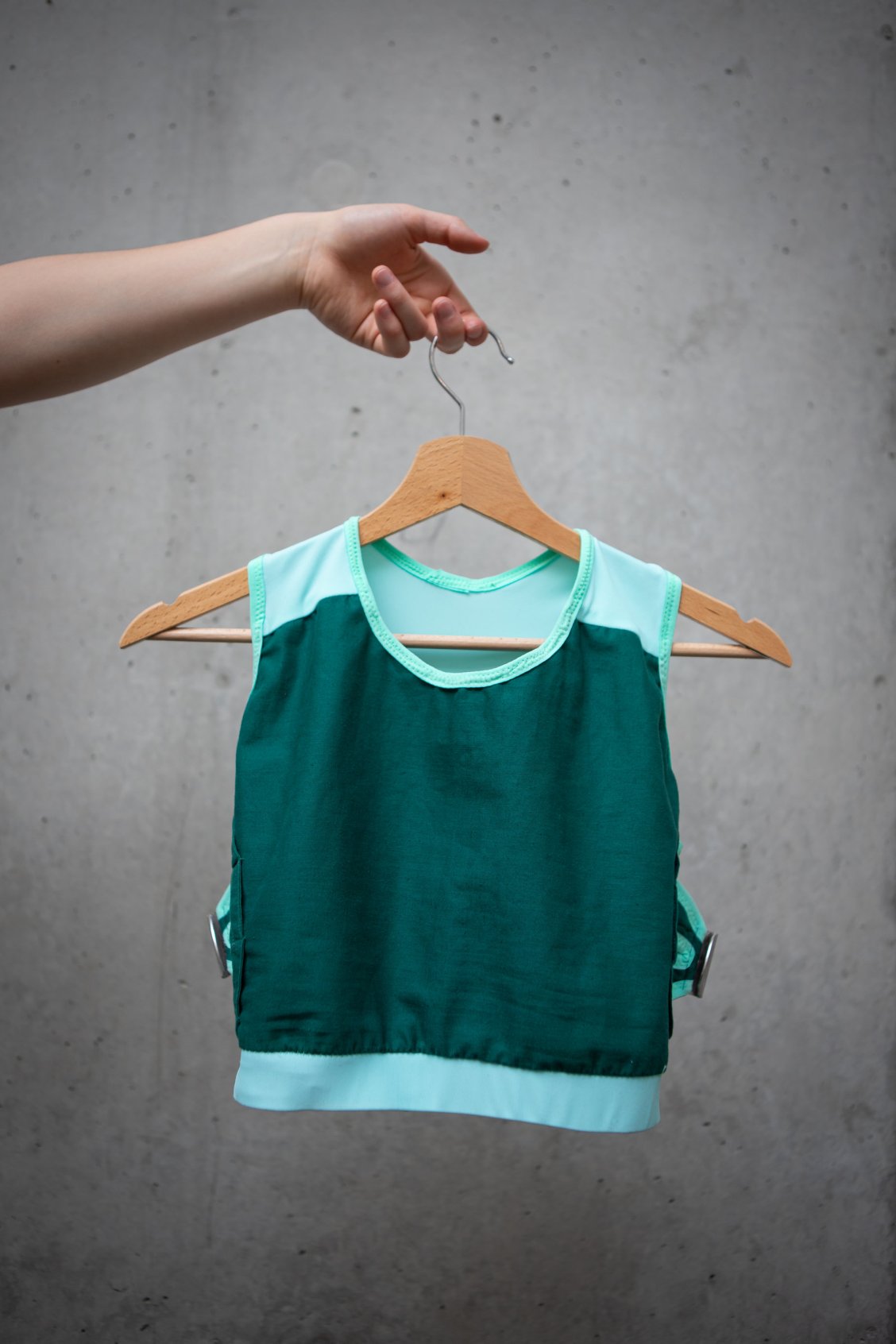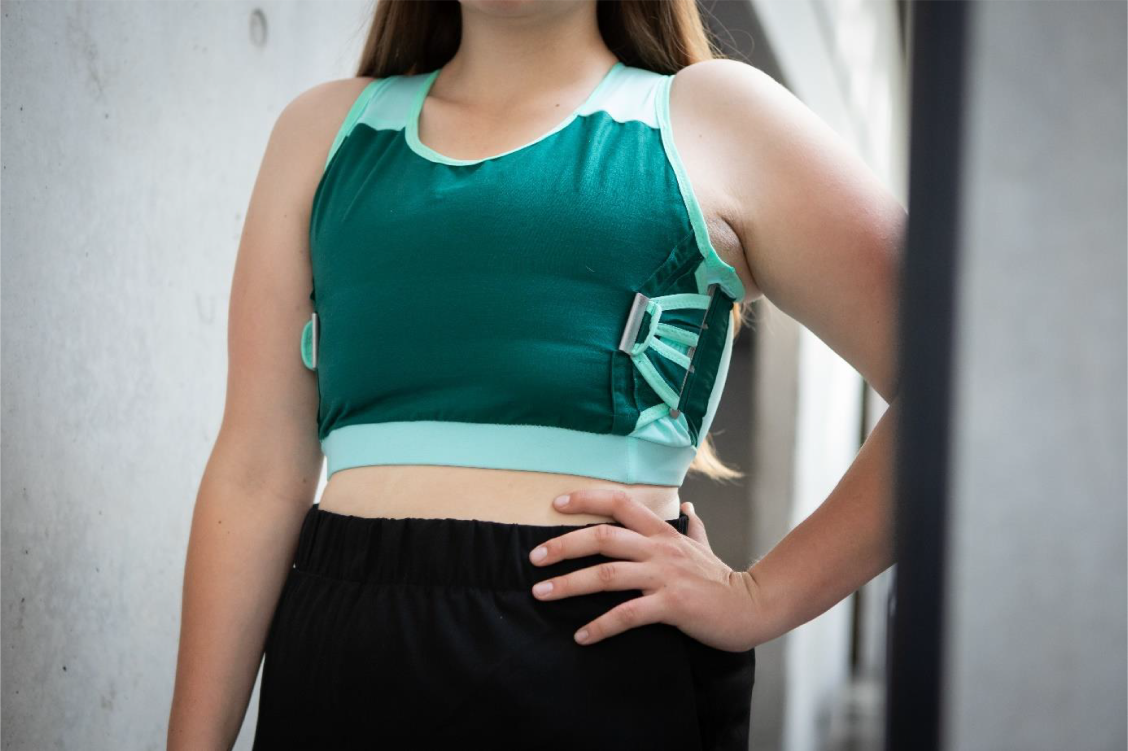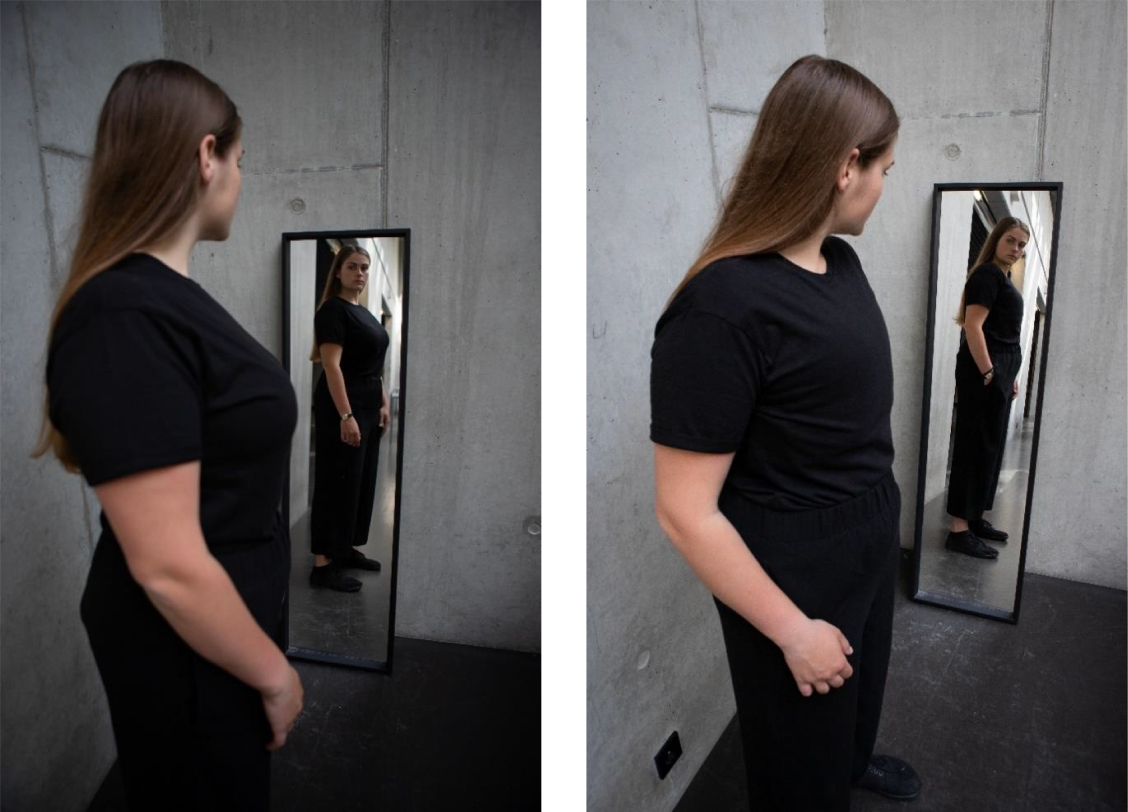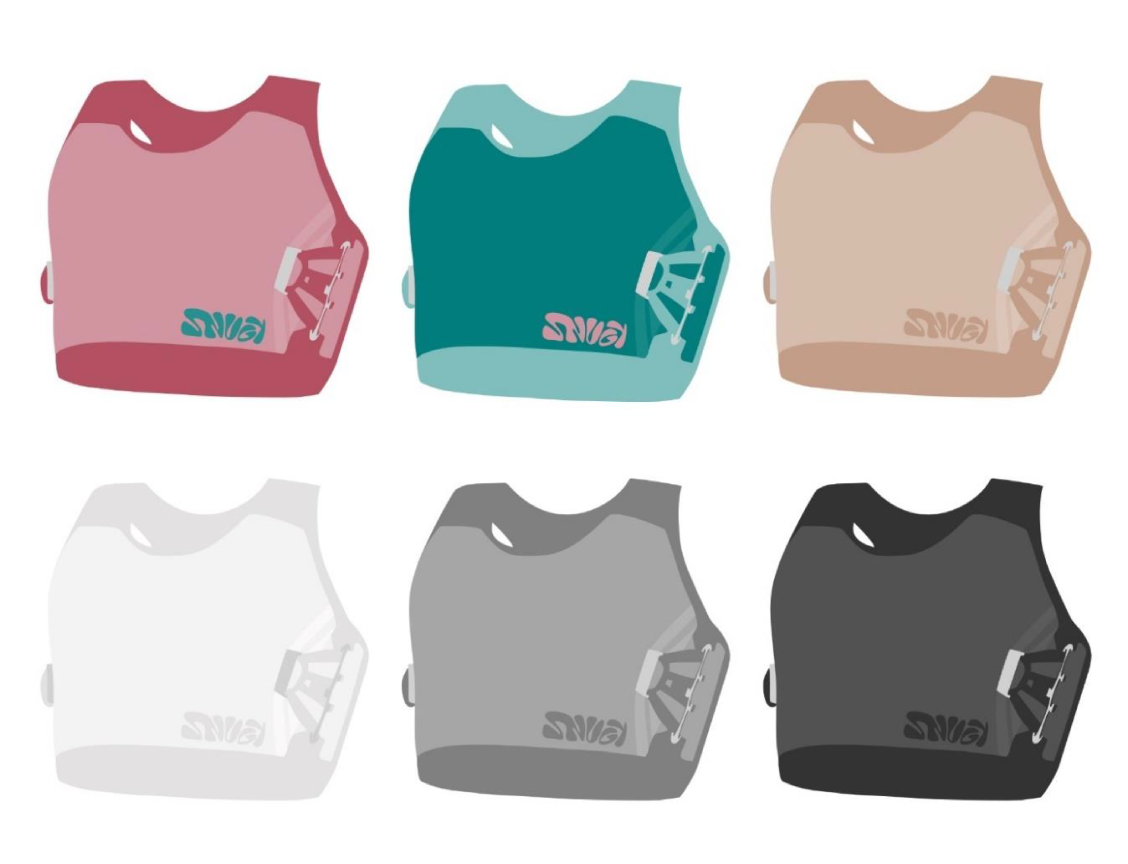A designer from FA CTU designed a chest binder for trans people. "I wanted to help mainly young people," says Robin Doleček
9/8/2023

Trans and non-binary people often desire to suppress their chest shape and achieve a more masculine appearance. But what all can happen with unprofessional tailoring?
It was my own experience that moved me to address the topic of aids for trans people. As a user, I experience the same problems that other trans people are trying to deal with. However, I was unable to find much scholarly work on aids for the trans community. The immediate response of over 400 respondents to my questionnaire speaks to the seriousness of the problem.
A binder is one of the tools that people who have a female body anatomy can use to achieve a more masculine look. However, wearing it is not very comfortable and there are associated health problems. Users cannot easily loosen and tighten the common types of binders in public. At work or school, they wear it longer than it is safe to wear. For me personally, it happens that I sometimes have to run to catch a tram and then cannot catch my breath with my chest tightened. Blocked ribs, bruises or skin problems are also not uncommon however.
Why does your design mainly target young trans people under 20?
Teenagers experiencing gender dysphoria (anxiety about having a biological sex different from the gender they identify with) often do not have the support of family or the ability to purchase expensive equipment from abroad. They then resort to drastic methods such as bandages and carpet tape. The price of the final product was therefore also crucial for me.
What makes your binder revolutionary?
My Snugy binder differs from other products in that the user has the option to loosen and tighten it directly on the body, even over clothing. If they get out of breath, get sick, or simply feel that their chest has been tightened for too long and they need a break, it’s easy to loosen. They can feel the hook even over their t-shirt and simply loosen the binder, while it remains on their body and they don't have to change. They can also adjust the fastening or tightening to suit their anatomy as they have several options of where to insert the hook.

How did the fastening method develop?
I tried several classic methods such as corset lacing or a metal zipper. But none met all my requirements for comfortable handling. Velcro, such as that on sandal straps, might seem ideal, as it's quick and you can adjust it exactly as you need it, but it has one major flaw – handling the is very loud. This, then, does not meet the essential condition of discretion. You don't want to attract the attention of everyone around you, when you loosen a binder during a class at school, for example. However, I did retain the principle of the push-through buckle, which you can also find on summer shoes. And for the actual fastening, I took inspiration from the hook that is often used to attach the chest strap on backpacks.
However, I was not able to find a suitable type on the market that would allow the easiest possible hooking even with one’s eyes closed. So I started experimenting with 3D printing and created a few prototypes of my own.
However, the hook on the final product is made of metal?
I would like to use the plastic material of 3D printing in production as well. But the forces acting on the hook won't allow me to do that, it would break. Therefore, I had to have the final version made from metal according to the 3D prototype. I also spent a long time looking for the actual placement of the fastening. In the front it was always visible under other clothing. And probably everyone knows what an ordeal it is to fasten a dress in the back, where you can't even reach. That's why you'll find the hooks placed on the sides where they are hidden under the arms. When you're wearing a T-shirt, that's where the fabric is loosest. Fastening in two places also allows for a better symmetrical tightening of the fabric.
The possibility of tightening (or, on the contrary, releasing) a binder was also addressed by a foreign student project. But it uses a smart fabric, and electrically-powered metal cables for tightening. I was trying to find an affordable solution for my target group.
What fabric did you use to make the binder?
You often find binders made entirely of elastic knit, only the front part is doubled. Some people may find this solution more comfortable but, especially in larger sizes, it does not serve its purpose. It works just like a sports bra, and rather accentuates the curves. My binder is made of two types of fabric. The front is solid cotton and only the back section is made from stretch polyamide knit.
Did you pay much attention to the packaging itself?
The box is very inconspicuous from the outside. Even really young people purchase binders, who often still live with their parents, who may not be very accepting and open. The unmarked packaging thus serves as a safety feature to ensure that the product actually reaches the user and that discretion is maintained.
I placed the colour print on the inside of the flap lid. Trans people often experience strong emotions after purchasing their first binder, so I wanted to make the first time they open the package a pleasant surprise.

Foreign products are sold in neutral colours such as grey or nude. Why did you choose a bolder color combination?
If I manage to put the Snugy into production, it is definitely necessary to have neutral colours on offer. It's partly underwear, after all. But I think it's important to add colour options to the range as well. In the questionnaire, it turned out that many people wear the binder as a visible part of their outfit in summer, for example with an unbuttoned shirt.
The trans community also uses the term passing. Society puts pressure on trans people to become perfect men or women and not be seen as trans at all. Is the use of aids always based on their own need, or is there sometimes a desire to please an intolerant environment?
It's individual and each person experiences this completely differently. But it's true that most of the time, the feelings are most unpleasant when in contact with others – when a person feels a certain way, has a certain gender identity but is not perceived as such by those around them. Though a trans person may, perhaps, alert their surroundings that they wish to be addressed a certain way, there is still the uncomfortable feeling that others view them differently. Some users wear these aids mainly when meeting other people. This does not mean that the person does not feel uncomfortable when alone. It’s merely that these feelings are more keenly felt when there are reactions from one’s surroundings. But people can also experience euphoria in private thanks to the binder.

Your supervisors Filip Streit and Tomáš Polák openly admit that the issue of aids for trans people was not a topic they had previously addressed. Was it difficult to get the assignment approved?
The hardest thing was to gather the courage to bring up this idea in the first place. As I said, it's a subject that concerns me personally. It even meant I had to out myself because I hadn't talked openly about my gender at school before. Both of my supervisors were great right from the start. As a first step, we did a little presentation (laughs) and explained all the terminology, for example. The best thing about working with them for six months was that after I described the topic sufficiently, they really only dealt with the technical side and the design.
The interview was conducted by Pavel Fuchs

